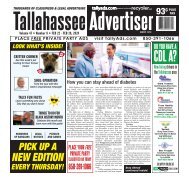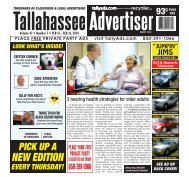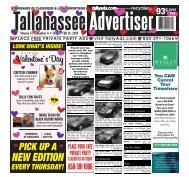2208_TTJM_AllPages
You also want an ePaper? Increase the reach of your titles
YUMPU automatically turns print PDFs into web optimized ePapers that Google loves.
SAFETY<br />
series<br />
wait until the hours fall under the<br />
limit or take a 34-hour restart to<br />
reset those hours at zero before<br />
driving again.<br />
It’s important to note that the<br />
14-hour rule and the 60 in seven<br />
and 70 in eight rules do not prohibit<br />
working beyond the set limits.<br />
The rules prohibit driving until<br />
the requirements are met, but nondriving<br />
work, such as loading or<br />
unloading, isn’t restricted. Drivers<br />
can work as many hours as they<br />
like, as long as no driving is done<br />
until the driver has had 10 hours<br />
off-duty or in the sleeper berth or<br />
the total hours fall below 60 or 70,<br />
depending on the rule used.<br />
The adverse weather provision<br />
is often misunderstood and misused.<br />
In order for a driver to drive<br />
extra hours under the rule, the circumstances causing<br />
the adverse conditions cannot have been reasonably<br />
known before the driving period began. For example,<br />
predicted rain can result in flooding over the roadway,<br />
or in certain conditions can quickly turn to snow and<br />
ice. An argument that those conditions could not have<br />
been reasonably known might be a solid one. However,<br />
if weather reports predicted freezing precipitation for<br />
several days, it becomes harder to argue that the driver<br />
couldn’t have known the roads would be bad.<br />
In another example, a traffic jam caused by an accident<br />
can’t be known beforehand — but claiming adverse<br />
driving conditions because of rush hour in a large<br />
city might not work as well.<br />
There are also specific regulations that govern ELDs.<br />
The first is that the device used must be registered with<br />
the FMCSA. That’s a process that begins with the manufacturer<br />
following the necessary registration steps, including<br />
a “self-certification” that the ELD meets all the<br />
requirements.<br />
The carrier must verify that the device is registered;<br />
if the carrier is a one-truck owner-operator business, the<br />
owner/driver has the responsibility. Registration can<br />
be done online at eld.fmcsa.dot.gov/list. The page includes<br />
a list of more than 800 registered devices and<br />
also includes a link to a list of devices for which the<br />
registration has been revoked.<br />
Also, it’s helpful to make sure the most current version<br />
of the ELD software is being used. Check with the<br />
manufacturer for updates.<br />
There may be a current problem with ELDs that<br />
depend on cellular networks to transmit data. The 3G<br />
network has been retired by every major carrier except<br />
Verizon, and even that one will be retired in December.<br />
Owners of ELDs that depend on the Verizon network<br />
should make sure their devices will operate on 4G or<br />
5G networks.<br />
Smaller cellphone carriers such as Cricket, Pure Talk<br />
or Consumer Cellular contract to use the networks<br />
of larger carriers, so a phone-based ELD that works<br />
through another carrier could still use the Verizon<br />
network.<br />
There are rules that govern ELD capabilities, too. The<br />
device must be able to transfer the driver’s record-ofduty<br />
status (RODS) electronically to an inspector during<br />
a stop, confirm successful transmission and allow the<br />
safety official to enter a comment.<br />
During an inspection, some officials will be satisfied<br />
with looking at the driver’s record on the screen of the<br />
ELD, but many will want either a printout or a copy of<br />
the record. This can be accomplished in several ways.<br />
The safety official can connect via Wi-Fi or Bluetooth,<br />
or the ELD system can transmit via fax or email. Another<br />
option is to record the data on a thumb drive that<br />
the official inserts into his or her own device.<br />
Instructions for operating the ELD, and for transmitting<br />
data must be carried by the driver and provided to<br />
the safety officer on demand. Often, written instructions<br />
are included in the ELD program so that it isn’t necessary<br />
to carry printed materials.<br />
Knowing the provisions of the HOS rules and the<br />
workings of the ELD that records them is a vital part of<br />
any driver’s job.<br />
10 THE TRUCKER JOBS MAGAZINE | AUGUST 2022 WWW.THETRUCKERJOBS.COM

















